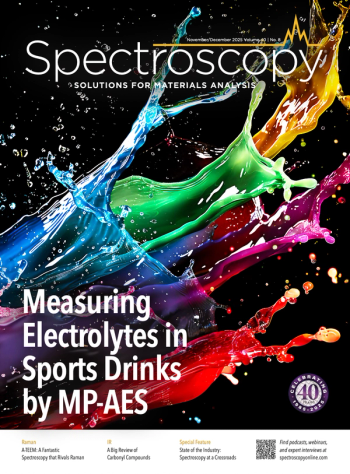
Using FT-IR Spectroscopy and Machine Learning to Identify Volatile Compounds in Beer
A recent study examined using Fourier-transform infrared (FT-IR) spectroscopy and machine learning to identify compounds in nine Chinese beers.
As beer producers look to acquire and attract a larger consumer base for their products, it is important that they understand the composition of compounds in beer that can enhance its quality and flavor.
A recent study published in Food Chemistry: X examined this issue closely. Led by Ling Gao and Ying-Hua Zhang from Northeast Agricultural University in Harbin, China, the research team studied nine different beer types produced from the same manufacturer (Tsingtao Brewery Co. Ltd.), identifying 23 volatile compounds using gas chromatography–mass spectrometry (GC–MS) (2).
The beers the researchers studied included Tsingtao stout black beer, Tsingtao premium beer, Tsingtao Craft Beer IPA, Tsingtao Classical, Tsingtao pilsner beer, Tsingtao pure draft beer (batch on May 22), Tsingtao pure draft beer (batch on May 24), Tsingtao pure draft beer (batch on May 25), and Tsingtao pure draft beer (batch on May 27). The beers were stored at 4 °C until analysis.
Using gas chromatography–mass spectrometry (GC–MS), the team identified 12 esters, four alcohols, five acids, and two phenols (2). The research team then used principal component analysis (PCA) to discriminate the different beer types and their flavor compounds. Ethyl caproate, ethyl caprylate, and phenylethyl alcohol emerged as the crucial volatile compounds distinguishing these beers (2).
Next, as part of their study, Gao and Zhang modeled and predicted the contents of six critical volatile compounds in beer samples using machine learning approaches, such as partial least squares regression (PLS-R) regression analysis. By using PLS-R, they connected the characteristic wavelength of the Fourier transform-infrared (FT-IR) spectrum with the concentration of these compounds (2). The flavor compounds of interest were phenylethyl alcohol (C8H10O), isopentyl alcohol (C5H12O), ethyl caprylate (C10H20O2), isopentyl acetate (C7H14O2), ethyl caproate (C8H16O2), and ethyl acetate (C4H8O2) (2).
These compounds were sourced from Shanghai McLean Biochemical Technology Co. Ltd. and prepared in 5% ethanol solutions at 20 different concentration gradients, ranging from 0.5% intervals. The specific concentration ranges were: phenylethyl alcohol (3–60 mg/L), isopentyl alcohol (5–100 mg/L), ethyl caprylate (0.1–2 mg/L), isopentyl acetate (0.15–3 mg/L), ethyl caproate (0.1–2 mg/L), and ethyl acetate (2.5–50 mg/L) (2).
The PLS-R analysis showed that the R² value of each sample in the prediction model ranged from 0.9398 to 0.9994, and the root mean square error of prediction (RMSEP) varied from 0.0122 to 0.7011 (2). These high R² values indicate a strong correlation between the predicted and actual concentrations of the volatile compounds, whereas the low RMSEP values suggest high accuracy in the predictions (2).
The proposed method in this study shows good consistency with the traditional GC–MS analysis, indicating its potential application in determining flavor compounds in beer samples (2). This advancement could revolutionize quality control in the brewing industry, offering a more efficient and potentially cost-effective method for monitoring beer quality (2).
Gao and Zhang’s study underscores the importance of understanding volatile compounds in beer, which not only contribute to its flavor but also to its overall quality. By identifying and modeling these compounds, the research offers a valuable tool for brewers to enhance and maintain the desired characteristics of their beer products (2).
With beer being a beverage enjoyed globally, improvements in quality control methodologies could have widespread benefits, ensuring that consumers receive a higher quality beer.
References
(1) SMAC Gig World, UV-Vis Spectroscopy: Application In Food Products Characterization. SMAC Gig World. Available at:
(2) Gao, Y.-F.; Li, X.-Y.; Wang, Q.-L.; et al. Discrimination and Quantification of Volatile Compounds in Beer by FTIR Combined with Machine Learning Approaches. Food Chem. X. 2024, 22, 101300. DOI:
Newsletter
Get essential updates on the latest spectroscopy technologies, regulatory standards, and best practices—subscribe today to Spectroscopy.


